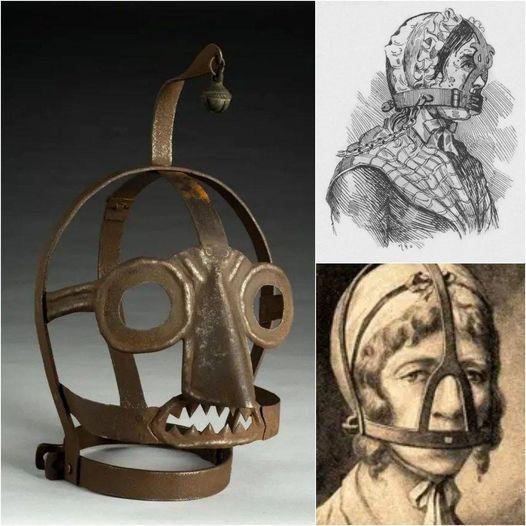The Scold’s Bridle, a macabre instrument of punishment from early modern
Europe, reveals much about the era’s gender dynamics and societal norms. This
device, designed to silence and humiliate, was primarily used on women
accused of being “scolds”—those who were perceived as overly talkative or
disruptive. An exploration of the Scolds Bridle offers a window into the
intersection of punishment and gender during this period.
The Scold’s Bridle, also known as the Branks, was a metal mask with a gag that
fit into the mouth, often fitted with spikes or a protruding bit. It was fastened
around the head with a locking mechanism, ensuring that the wearer could
neither speak nor remove the device. The gag made speaking painful, while the
overall contraption served as a form of public humiliation, as women were often
paraded through towns while wearing it.

The use of the Scold’s Bridle reflects the deeply entrenched patriarchal valves
of early modern Europe. Women were expected to conform to specific roles,
and those who deviated from these norms faced harsh consequences. The
label of a “scold” was a gendered one, rarely applied to men, signifying a
societal intolerance for women who challenged male authority or expressed
themselves freely. The Bridle was a tool to enforce silence and submission,
reinforcing the idea that women’s voices were to be controlled and suppressed.
Public humiliation was a key aspect of the punishment.
By making the act of
silencing visible, communities reinforced the consequences of non-conformity.
